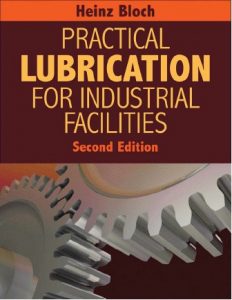Practical Lubrication for Industrial Facilities Second Edition
Practical Lubrication for Industrial Facilities Second Edition
Practical Lubrication for Industrial Facilities Second Edition includes the latest material on oil analysis, the energy conservation aspects of lube oil application and selection and bearing protector seals. Information on synthesized hydrocarbons and oil mist lubrication is thoroughly revised. It addresses the full scope of industrial lubricants, including general purpose oils, hydraulic fluids, food-grade and environmentally friendly lubricants, synthetic lubricants, greases, pastes, waxes and tribosystems. Detailed coverage is provided on lubrication strategies for electric motor bearings, gear lubrication, compressors and gas engines, and steam and gas turbines. Other topics include proper lubricant handling and storage, as well as effective industrial plant oil analysis practices.
You can also read Modeling and Control in Air-conditioning Systems
Practical Lubrication for Industrial Facilities Second Edition Content
- Principles of Lubrication
![Practical Lubrication for Industrial Facilities Second Edition]()
- Lubricant Categories
- Lubricant Testing
- General Purpose R&O Oils
- Hydraulic Fluids
- Food Grade and “Environmentally Friendly” Lubricants
- Synthetic Lubricants
- Lubricants for Forest Product and Paper Machines
- Lubricating Greases
- Pastes, Waxes and Tribosystems.
- Constant Level, Centralized, and Oil Mist Lubrication Systems
- Bearings and Other Machine Elements
- Lubrication Strategies for Electric Motor Bearings
- Gear Lubrication
- Compressors and Gas Engines
- Steam and Gas Turbines
- Lube Oil Contamination and On-stream Oil Purification
- Storage Methods and Lubricant Handling.
- Successful Oil Analysis Practices in the Industrial Plant
- APPENDICES
- Appendix A Lubrication Program—Work Process Manual
- Appendix B Tables, Charts, and Factors
- Glossary of Terms
- Index
The world’s best manufacturers and formulators of lubricants are constantly seeking to improve products to keep pace with the development of higher-speed machinery, or equipment that is run at over 100 percent of name plate capacity, or machines that are being subjected to temperature extremes, extended oil drain intervals, or just plain simple abuse. In short, even as weread these introductory pages, new lubricants are in the process of being developed; they will go beyond the capabilities of today’s already exceptional products. We should consider them “legacy brands,” triedand tested and found worthy of consideration by a reliability-focused user


Comments are closed.